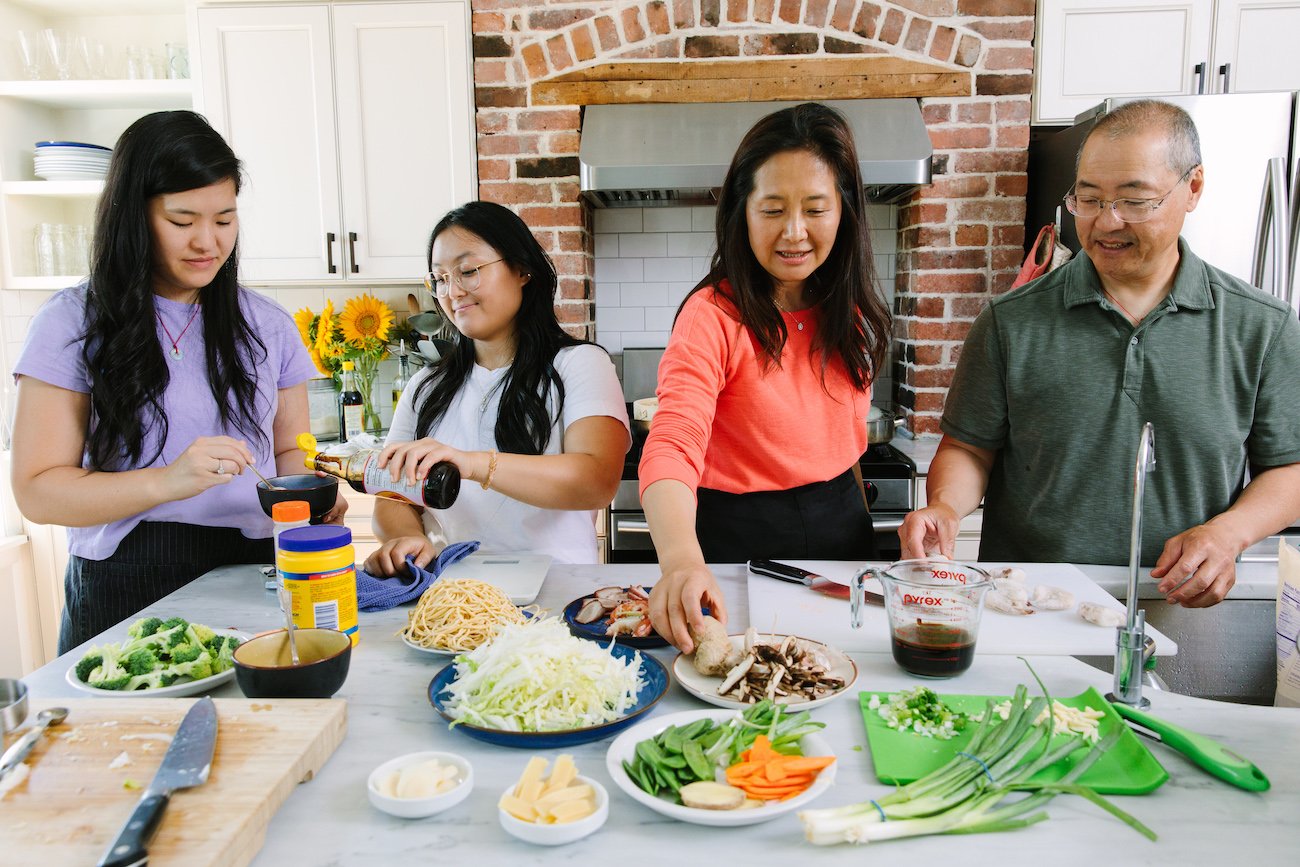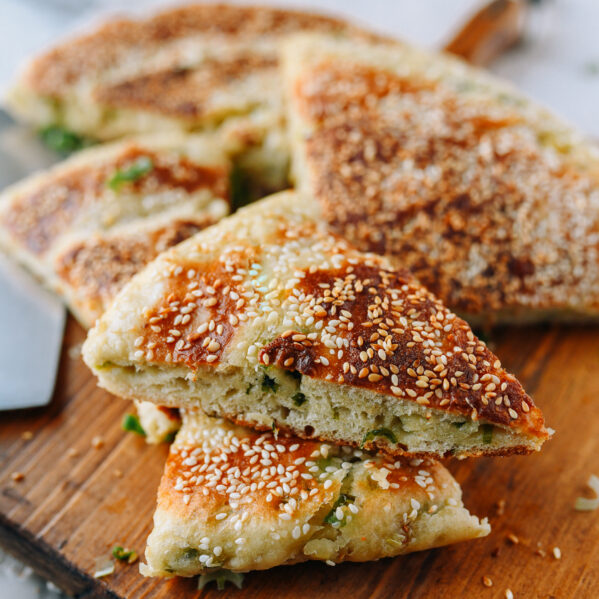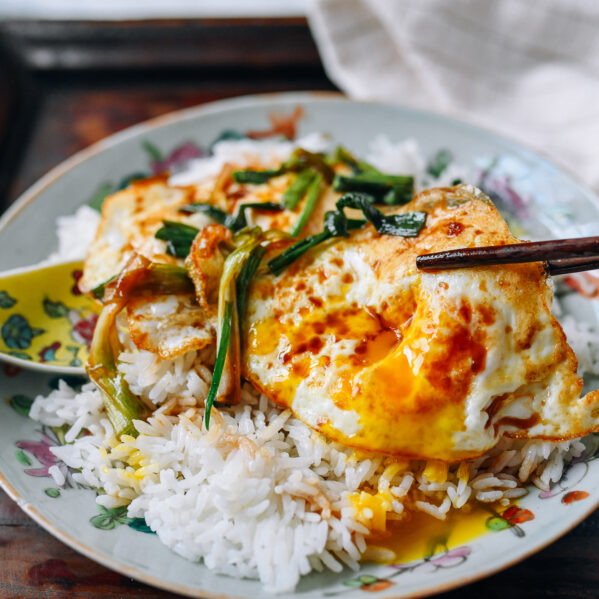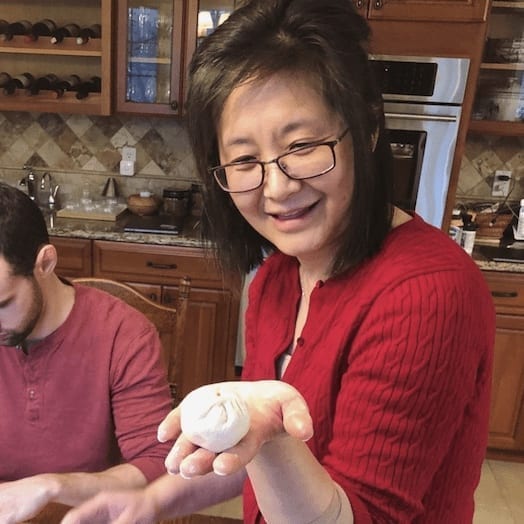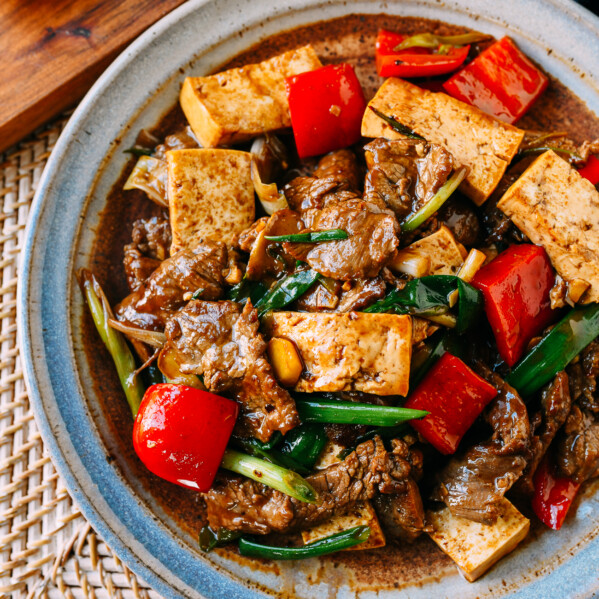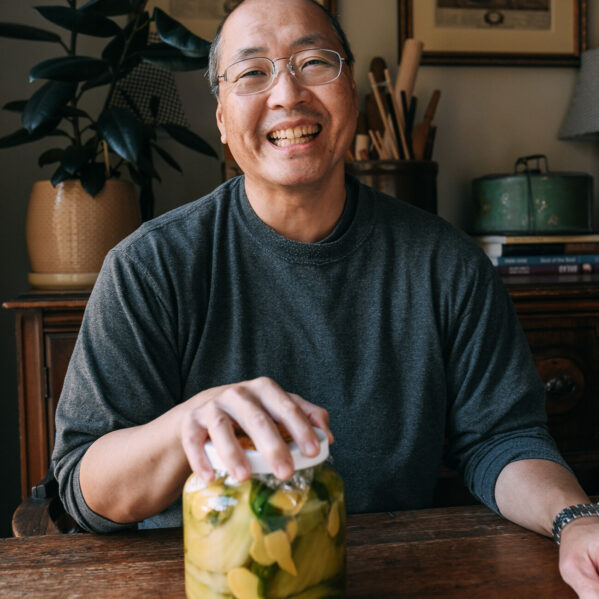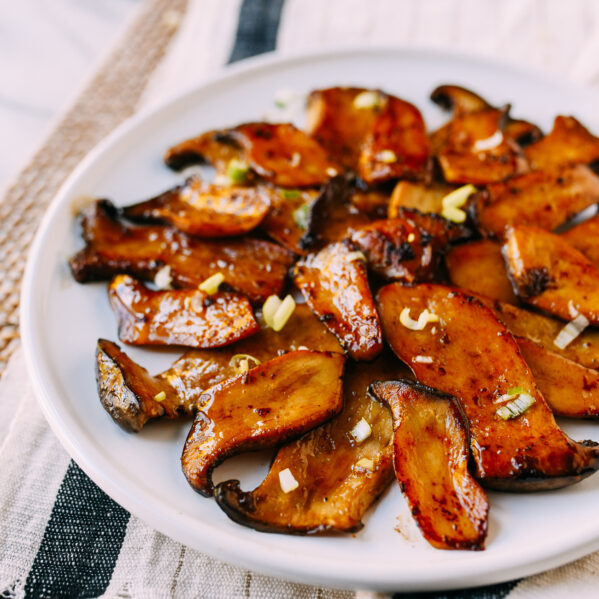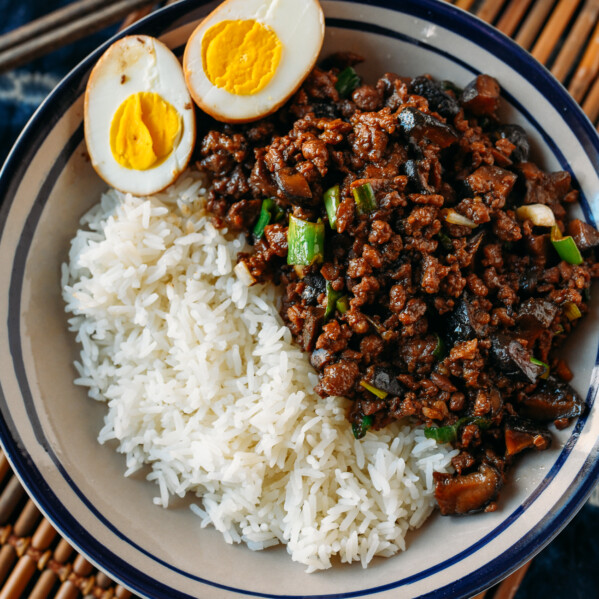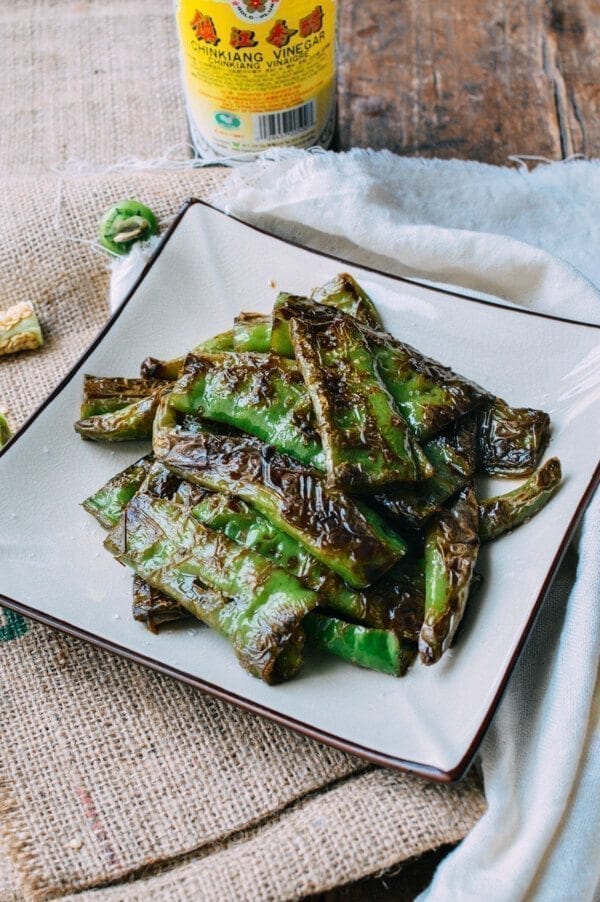
Tiger Skin Peppers: Recipe Instructions
 Start by preparing your long hot green peppers be de-seeding them. Be sure not to touch your face or eyes before washing your hands thoroughly with soap and warm water. Deseeding and removing the core of the pepper significantly reduces the spice factor of any pepper by a lot.
Alternatively, you can also use the less spicy cubano pepper or even a completely benign green bell pepper. Once de-seeded, cut the peppers in half.
Start by preparing your long hot green peppers be de-seeding them. Be sure not to touch your face or eyes before washing your hands thoroughly with soap and warm water. Deseeding and removing the core of the pepper significantly reduces the spice factor of any pepper by a lot.
Alternatively, you can also use the less spicy cubano pepper or even a completely benign green bell pepper. Once de-seeded, cut the peppers in half.
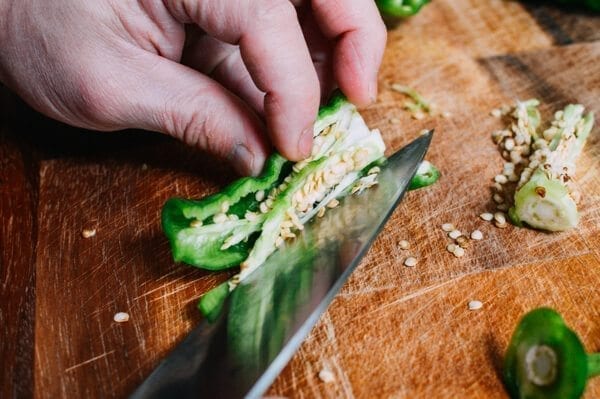
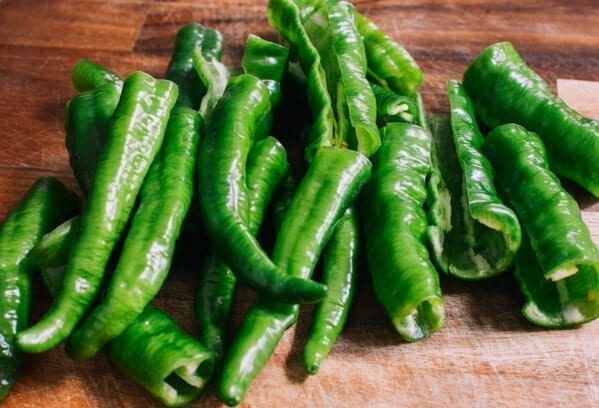 Combine the water, sugar, Chinese black rice vinegar, and a pinch of salt in a bowl and set aside.
Heat the wok over medium heat and spread the oil around the perimeter of the wok. The oil should be hot but not smoking. Add the peppers to the wok and spread them around evenly so they are all in contact with the wok surface.
Combine the water, sugar, Chinese black rice vinegar, and a pinch of salt in a bowl and set aside.
Heat the wok over medium heat and spread the oil around the perimeter of the wok. The oil should be hot but not smoking. Add the peppers to the wok and spread them around evenly so they are all in contact with the wok surface.
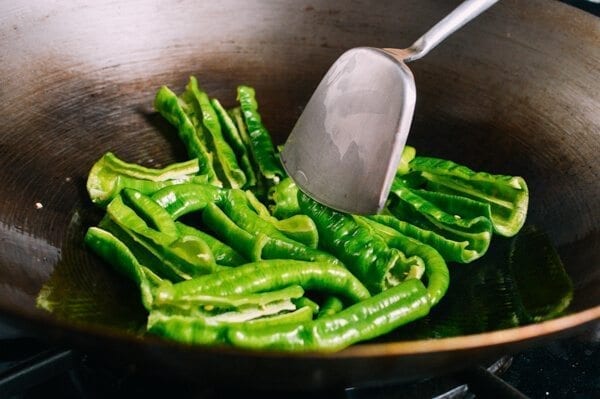 After about 1 minute, start tossing the peppers with your spatula, making sure the peppers cook evenly. You know the wok is the right temperature if you gently press a pepper to the wok and you feel it searing and trying to bounce back.
After about 1 minute, start tossing the peppers with your spatula, making sure the peppers cook evenly. You know the wok is the right temperature if you gently press a pepper to the wok and you feel it searing and trying to bounce back.
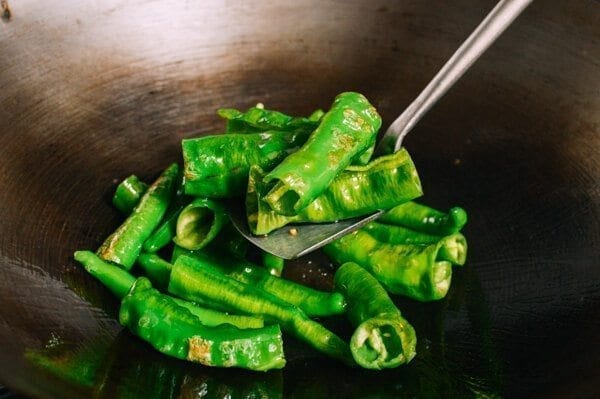 Turn the temperature down if the peppers look like they are starting to burn. You do need some time for the peppers to cook through, because they should be somewhat soft in the finished dish. Continue tossing and turning the peppers for another 5 minutes to make sure all sides get a nice “tiger skin” sear.
Turn the temperature down if the peppers look like they are starting to burn. You do need some time for the peppers to cook through, because they should be somewhat soft in the finished dish. Continue tossing and turning the peppers for another 5 minutes to make sure all sides get a nice “tiger skin” sear.
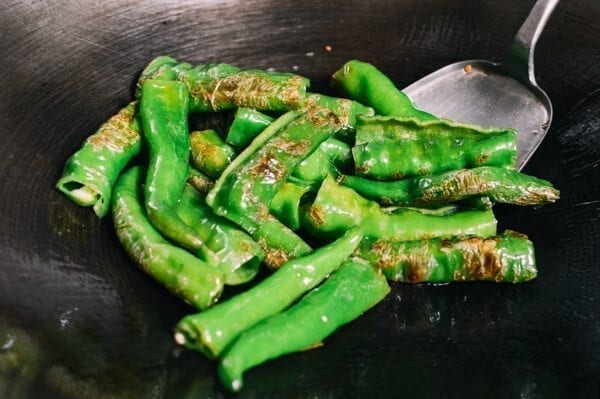 Once the peppers have that uniform “tiger skin” look, turn the heat up to medium high and add in the vinegar mixture.
Once the peppers have that uniform “tiger skin” look, turn the heat up to medium high and add in the vinegar mixture.
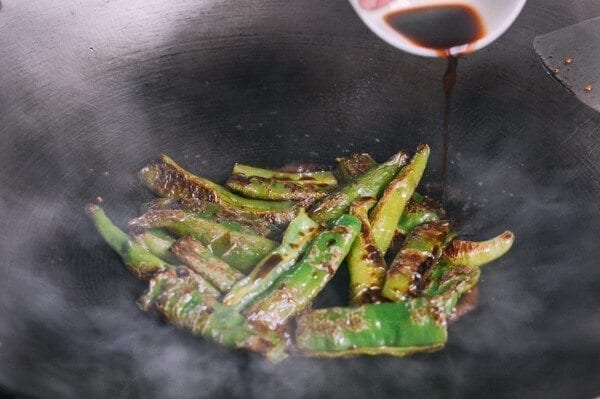 Stir fry for about 30 seconds until the sauce is reduced slightly.
Stir fry for about 30 seconds until the sauce is reduced slightly.
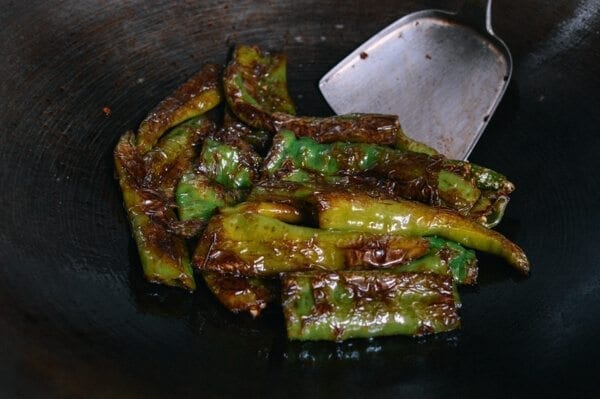 Serve with a sprinkling of sea salt and if you like, drizzle a bit more Chinkiang black vinegar and enjoy!
Serve with a sprinkling of sea salt and if you like, drizzle a bit more Chinkiang black vinegar and enjoy!
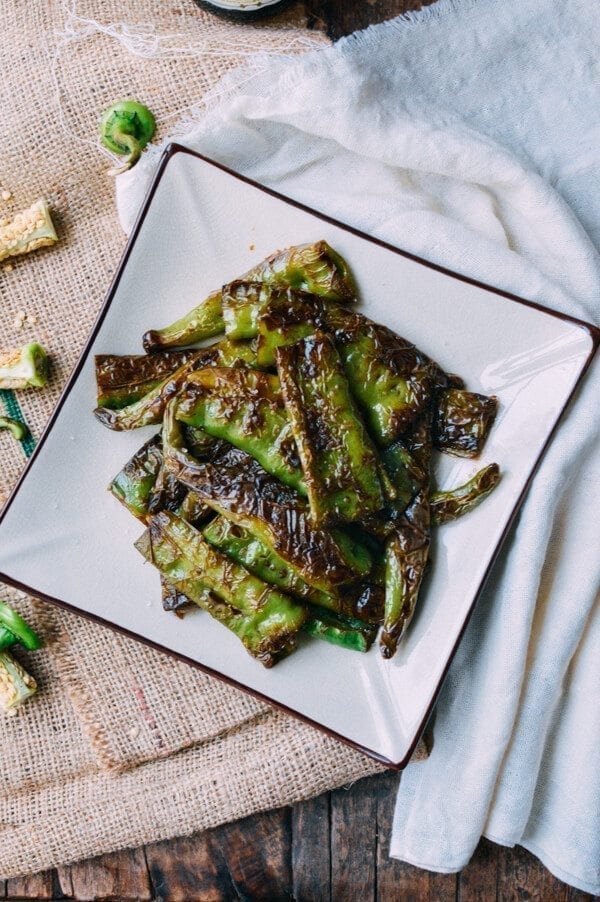
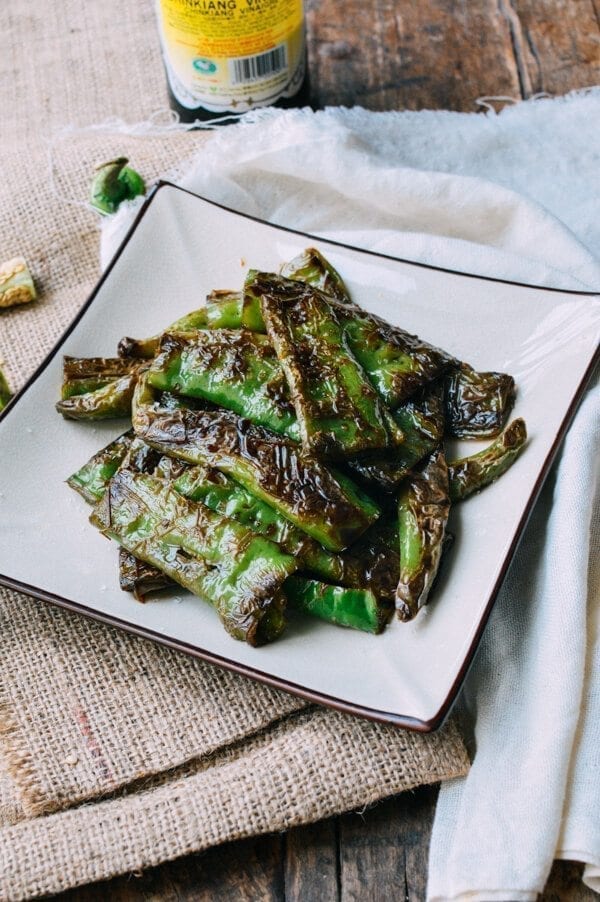
Recipe
Tiger Skin Peppers
Tiger skin peppers or hu pi jian jiao (虎皮尖椒) is a popular Sichuan dish. The name comes from the color of the peppers after they’ve been seared in a hot wok, which resembles a tiger’s coat.
Serves: 4 servings
Ingredients
- 12 long hot green peppers (de-seeded and cut in half)
- 3 tablespoons warm water
- 1/2 teaspoon sugar
- 3 tablespoons Chinese black rice vinegar
- sea salt (to taste)
- 3 tablespoons peanut or avocado oil (any oil with a high smoking point and light flavor)
Instructions
- Start by preparing your peppers be de-seeding them. Be sure not to touch your face or eyes before washing your hands thoroughly with soap and warm water. Once de-seeded, cut the peppers in half.
- Combine the water, sugar, vinegar, and a pinch of salt in a bowl and set aside. Heat the wok over medium heat and spread the oil around the perimeter of the wok. The oil should be hot but not smoking. Add the peppers to the wok and spread them around evenly so they are all in contact with the wok surface.
- After about 1 minute, start tossing the peppers with your spatula, making sure the peppers cook evenly. You know the wok is the right temperature if you gently press a pepper to the wok and you feel it searing and trying to bounce back. Turn the temperature down if the peppers look like they are starting to burn. Continue tossing and turning the peppers for another 5 minutes to make sure all sides get a nice “tiger skin” sear.
- Once the peppers have that uniform “tiger skin” look, turn the heat up to medium high and add in the vinegar mixture. Stir fry for about 30 seconds until the sauce is reduced slightly. Serve with a sprinkling of sea salt.
Nutrition Facts
Calories: 133kcal (7%) Carbohydrates: 10g (3%) Fat: 11g (17%) Saturated Fat: 1g (5%) Sodium: 596mg (25%) Fiber: 4g (16%) Sugar: 5g (6%) Vitamin C: 16mg (19%)





